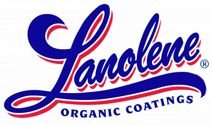|
HEALTH HAZARD INFORMATION:
ACUTE EFFECTS
SWALLOWED;
May cause irritation of mouth, throat and digestive tract. Large doses may cause drowsiness and may lead to
unconsciousness. Aspiration (liquid into lungs) of vomited material hazardous. Can cause severe, even fatal
pneumonitis.
EYE:
May cause slight to moderate eye irritation. This can result in a stinging sensation, watering of the eyes and
inflammation of the eyelids.
SKIN:
May be slightly irritating to skin. This can result in itching and redness of the skin. Poisoning may occur
from prolonged exposure or massive skin contact.
INHALED:
Inhalation of mists of aerosols can produce respiratory irritation. vapours can cause headache, nausea with
vomiting, dizziness, confusion and other effects of central nervous system depression. Loss of consciousness can occur at high concentrations followed by convulsions and death.
CHRONIC EFFECTS:
Prolonged or repeated contact may cause dermatitis.
FIRST AID
SWALLOWED:
Do Not Induce Vomiting due to the risk of the material entering the lungs.
Do Not give anything to drink to victim that is unconscious or losing consciousness. Thoroughly rinse victims mouth
with water. Give one or two cups of water to drink to dilute material in stomach. If vomiting occurs naturally, lean the victim forward to reduce the risk of the material entering the lungs (aspiration). Repeat administration of water.
EYE:
Flush with copious water for at least 15 minutes. If irritation persists, seek medical aid.
SKIN:
Wash with soap and water. Remove contaminated clothing and wash before re-use.
INHALED:
Move to fresh air. Keep warm and at rest. Get medical aid.
FIRST AID FACILITIES:
Soap, warm water and eye wash required near worksite.
ADVICE TO DOCTOR:
Because of the risk of aspiration, gastric lavage should only be undertaken after endotracheal intubation.
PRECAUTIONS FOR USE:
EXPOSURE STANDARDS:
TLV TWA: 790mg / m³
ENGINEERING CONTROLS:
This material is volatile and should be used in a well ventilated area. In confined spaces, or when high levels
of vapour or mist are encountered, exhaust ventilation should be provided to maintain airborne concentrations below
the exposure standards.
PERSONAL PROTECTION:
Always wash hands before smoking, eating, drinking or using the toilet. The use of barrier cream is
recommended. Avoid contact with the skin and breathing in vapours or mists. follow normal industrial personal
protection practices. The use of additional protective clothing should be readily available.
a. Splash proof chemical safety goggles or face shield.
b. Neoprene or nitrile rubber gloves.
c. Chemical resistant rubber boots.
d. PVC or leather apron and sleeves or PVC overalls.
Details on the use and selection of respiratory protection can be found in Australian Standard 1715. Where
the concentration of vapour or mist approaches the exposure limit, the following personal protective equipment is
recommended.
a. Short elevated exposures- filter respirator with correct organic vapour filter. If the exposure is more than 10 times the exposure limit then the use of air supplied respirator may be required.
b. For prolonged, elevated exposures - air supplier respirator or self contained breathing
apparatus(SCBA).
FLAMMABILITY:
Non-flammable liquid.
ENVIRONMENT:
Environmentally hazardous material in solution form. Non - Hazardous (1) One hour after exposure to air.
Prevent entry to waterways and drains.
SAFE HANDLING INFORMATION:
STORAGE AND TRANSPORT:
Schedule 5 Poison. Keep containers securely sealed and protected against physical damage. Store away from
sources of heat or ignition. Store in a well ventilated area. Store away from oxidizing agents. Refer to AS 1940 for the design, construction and operation of installations for the storage and handling of flammable and combustible liquids in locations that are generally industrial, commercial or rural in nature.
PACKAGING AND LABELLING:
Conforms to the Australian Dangerous Goods Code: Non - Applicable
Section 3 "Marking of packages, Vehicles and Transport Containers.
Section 5 "Packaging for Dangerous Goods"
Section 9.4 "Alphabetical List of Dangerous Goods"
SPILLS AND DISPOSAL:
Shut off all possible sources of ignition. Remove any naked lights and strong heat sources. Do Not Smoke.
For large spills notify Emergency Services. Evacuate unprotected personnel from danger area. Work upwind. If
spillage occurs in a confined space ensure adequate ventilation. Isolate leaking containers and stop if safe to do so.
Contain using sand and earth, prevent runoff into drains and waterways. If contamination of sewers or waterways has
occurred advise the local emergency services. Wear appropriate protective clothing and equipment, see 'Personal
Protection' in this MSDS.
MINOR SPILL:
Less than 100 litres. Absorb the liquid with sand, earth or other non-combustible absorbent. Place used
absorbent into suitable, sealable container and label.
MAJOR SPILL:
Take up with vacuum track or absorb with sand, earth or non-combustible absorbent, place in a suitable
container, seal and label. Follow the disposal requirements of the State Environmental Protection Authority. Do Not
flush into drains or sewers.
FIRE & EXPLOSION HAZARD:
Moderate Hazard.
Hazardous decomposition products of heating and or burning.
Extinguish Fire with CO2, Dry Chemical or Foam.
Reactivity Data: Carbon Monoxide and Dioxide, smoke.
REACTIVITY:
May react with strong oxidising materials.
OTHER SAFE HANDLING INFORMATION:
MAJOR PRECAUTIONS:
1. IRRITANT
2. ON SPILLAGE HYDROCARBON CONTENT WILL EVAPORATE PROPORTIONATELY LEAVING ORGANIC NON-TOXIC LANOLIN.
OTHER INFORMATION:
Contact Point: CHEMICAL EMERGENCIES: 02 9153 8587
TECHNICAL ADVICE: 02 9153 8587
Date Reviewed: 20/01/99
The information and recommendations contained herein are based on data believed to be correct at this time. However,
no guarantee or warranty of any kind, expressed or implied is made with respect to the information contained herein.
EXCEL EQUIP Pty Ltd. ABN 88 075 384 495
The information contained herein is to the best of our knowledge accurate, but since the circumstances and conditions
in which it may be used are beyond our control, we do not accept liability for any loss or damage, however arising,
which results directly or indirectly from the issue of such information nor do we offer any warranty of immunity
against patent infringement.
|

